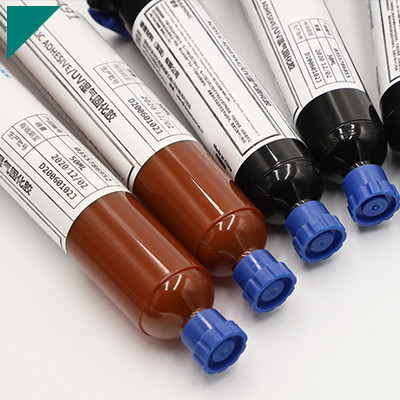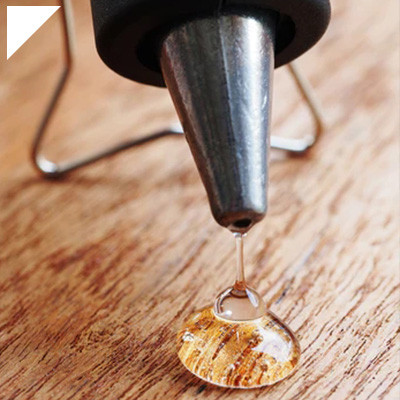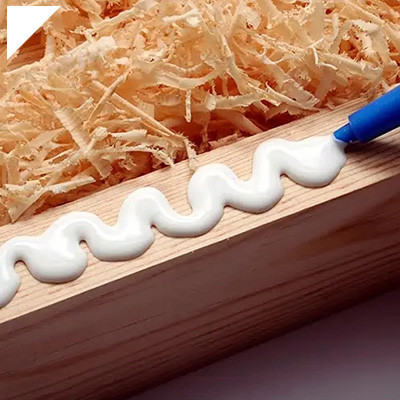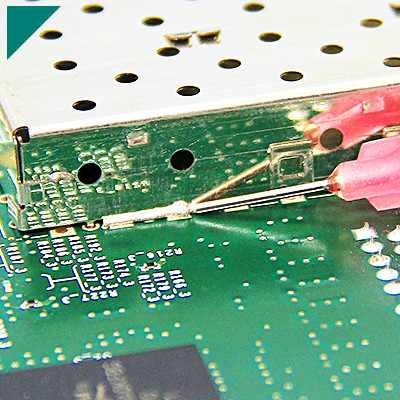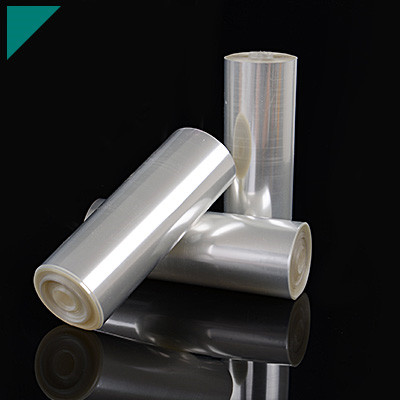Urethane Conformal Coating

Urethane conformal coatings offer a versatile solution for protecting electronic assemblies, providing excellent protection against environmental factors such as moisture, chemicals, and temperature extremes. As a popular choice in various industries, including aerospace, automotive, and consumer electronics, urethane conformal coatings provide a durable barrier while maintaining electrical integrity. This category delves into the essential aspects, applications, and considerations surrounding urethane conformal coatings.
Table of Contents
ToggleWhat is urethane conformal coating?
Urethane conformal coating is a protective coating applied to electronic circuit boards and other sensitive components to safeguard them from environmental factors such as moisture, dust, chemicals, and temperature extremes. It is formulated from urethane resins, which offer excellent protection and durability.
The conformal coating process involves applying a thin layer of urethane material over the electronic components, conforming to their shape and providing a protective barrier. This coating is particularly advantageous in industries where electronic devices are exposed to harsh conditions, such as automotive, aerospace, military, and industrial applications.
One critical feature of urethane conformal coatings is their ability to conform to the contours of the components, ensuring complete coverage and protection. This conformal nature allows the coating to reach areas that may be difficult to access with other coatings, providing thorough insulation against potential damage.
Urethane coatings offer several benefits over alternative materials. They provide excellent moisture and humidity resistance, preventing water ingress and moisture-related damage such as corrosion and short circuits. Additionally, they offer resistance to chemicals, including solvents and acids, which can degrade unprotected electronic components.
Furthermore, urethane conformal coatings offer superior thermal stability, maintaining their protective properties over various temperatures. This makes them suitable for applications where electronic devices may be exposed to extreme heat or cold.
In terms of application, urethane conformal coatings can be applied using various methods, including spraying, brushing, or dipping. Once applied, the coating cures to form a durable, transparent layer that does not interfere with the functionality of the electronic components.
Urethane conformal coatings provide reliable protection for electronic devices operating in demanding environments, ensuring their long-term reliability and performance. Their ability to conform to the contours of components and their resistance to moisture, chemicals, and temperature extremes makes them a preferred choice for many industries requiring robust electronic protection.
How does urethane conformal coating differ from other types of conformal coatings?
Urethane conformal coating is a protective coating used in electronics manufacturing to safeguard printed circuit boards (PCBs) and other sensitive components from environmental factors such as moisture, dust, chemicals, and temperature extremes. It differs from other conformal coatings primarily in its material composition and properties.
- Material Composition: Urethane conformal coatings are typically made from polyurethane polymers, which offer a unique combination of flexibility and durability. This material is known for its excellent resistance to abrasion and chemical exposure, making it suitable for harsh operating environments. In contrast, other conformal coatings may use acrylics, silicones, or epoxies, each with its characteristics.
- Flexibility and Elasticity: One of the key distinguishing features of urethane conformal coatings is their flexibility and elasticity. They can withstand mechanical stress, including thermal cycling and vibrations, without cracking or delaminating from the substrate. This property is particularly beneficial in applications where the PCB may undergo frequent movement or mechanical strain.
- Moisture Resistance: Urethane coatings provide robust protection against moisture ingress, which is crucial for maintaining the integrity and reliability of electronic assemblies. Their moisture resistance helps prevent corrosion and electrical failures caused by prolonged exposure to humid or wet environments.
- Chemical Resistance: Urethane conformal coatings resist various chemicals, including solvents, fuels, and acids. This resistance ensures that the coated components remain unaffected by potential chemical exposure, thus extending their operational lifespan and reliability.
- UV Stability: Some urethane formulations offer UV stability, protecting the coated surfaces from the harmful effects of ultraviolet radiation. This feature is essential in outdoor or high-exposure applications where prolonged UV exposure could degrade the coating and underlying components.
- Application Method: Urethane conformal coatings can be applied using various methods, including spray, dip, or brush coating, offering flexibility in manufacturing processes. Additionally, they can be cured at room temperature or through heat curing, allowing for rapid processing and efficient production.
Urethane conformal coatings are distinguished by their flexibility, durability, and chemical resistance, making them an excellent choice for protecting electronic assemblies in demanding environments.
What are the main properties of urethane conformal coatings?
Urethane conformal coatings are protective materials applied to electronic circuit boards to safeguard them from environmental factors such as moisture, dust, chemicals, and temperature fluctuations. These coatings offer several fundamental properties that make them popular in various industries:
- Chemical Resistance: Urethane conformal coatings provide excellent resistance against various chemicals, including solvents, acids, and bases. This property ensures that the coated electronic components remain unaffected even when exposed to harsh chemical environments, thus extending their lifespan and reliability.
- Moisture Protection: One of the conformal coatings’ primary functions is protecting electronic assemblies from moisture ingress. Urethane coatings exhibit high moisture resistance, forming a barrier that prevents water vapor and liquid water from reaching the sensitive components on the PCB. This feature is crucial for maintaining the performance and functionality of electronic devices, especially in humid or wet environments.
- Mechanical Strength: Urethane conformal coatings offer good mechanical strength and durability, protecting against mechanical stresses such as vibration, shock, and abrasion. This property helps prevent damage to the delicate circuitry and solder joints, ensuring the long-term reliability of the coated electronic assemblies, even in rugged operating conditions.
- Thermal Stability: Urethane coatings possess excellent thermal stability, allowing them to withstand various temperatures without degradation. They can maintain their protective properties over a broad temperature range, from sub-zero to elevated temperatures encountered in various applications. This thermal stability ensures consistent performance of the coated electronics in extreme temperature environments.
- Dielectric Properties: Urethane conformal coatings exhibit good dielectric properties, providing insulation and electrical isolation to the components on the circuit board. This property is essential for preventing electrical short circuits and leakage currents, thereby maintaining the integrity and reliability of the electronic devices.
- Adhesion: Urethane coatings adhere well to various substrates, including metals, plastics, and ceramics, ensuring uniform coverage and reliable protection across the entire surface of the PCB. Proper adhesion prevents delamination or peeling of the coating, which could compromise the effectiveness of the protection.
Urethane conformal coatings offer a combination of chemical resistance, moisture protection, mechanical strength, thermal stability, dielectric properties, and adhesion, making them ideal for enhancing the reliability and longevity of electronic assemblies in diverse applications.
What are the key benefits of using urethane conformal coatings?
Urethane conformal coatings offer a range of benefits that make them a popular choice for protecting electronic components in various industries. These coatings, applied in a thin layer to conform to the shape of the substrate, provide reliable protection against many environmental factors. Here are some key benefits of using urethane conformal coatings:
- Chemical Resistance: Urethane coatings resist various chemicals, including solvents, acids, and bases. This resistance helps prevent damage to electronic components when exposed to harsh environments containing chemicals.
- Moisture Resistance: One of the primary functions of conformal coatings is to protect electronic assemblies from moisture and humidity. Urethane coatings create a barrier that prevents moisture ingress, reducing the risk of corrosion and electrical failures due to moisture-induced damage.
- Mechanical Protection: Urethane conformal coatings protect delicate electronic components against physical damage such as abrasion, vibration, and impact. This protection enhances the reliability and durability of electronic assemblies, particularly in rugged operating conditions.
- Thermal Stability: Urethane coatings offer good thermal stability, maintaining their protective properties over a wide temperature range. This characteristic is crucial for electronic devices operating in environments with fluctuating temperatures or high thermal loads.
- Dielectric Properties: Urethane conformal coatings have excellent dielectric properties, insulating and protecting electrical circuits from short circuits and other electrical failures. This property is essential for maintaining the integrity and performance of electronic assemblies.
- UV Resistance: Many urethane formulations are UV resistant, protecting against ultraviolet radiation that can degrade the performance and reliability of electronic components exposed to sunlight or UV-rich environments.
- Adhesion: Urethane coatings typically exhibit strong adhesion to various substrates, including metals, plastics, and ceramics. This adhesion ensures that the coating remains firmly bonded to the surface, even under challenging conditions, prolonging the lifespan of electronic assemblies.
- Flexibility: Urethane conformal coatings offer flexibility, allowing them to accommodate the expansion and contraction of substrates due to temperature fluctuations without cracking or delamination. This flexibility ensures long-term protection without compromising performance.
Urethane conformal coatings provide a robust protective barrier that safeguards electronic assemblies from various environmental hazards, contributing to enhanced reliability, longevity, and performance of electronic devices in diverse applications.
What are the typical applications of urethane conformal coatings?
Urethane conformal coatings find widespread applications across various industries where protecting electronic components from environmental factors is essential. Some typical applications include:
- Electronics: Urethane conformal coatings are extensively used in the electronics industry to protect printed circuit boards (PCBs), semiconductor devices, and other electronic components from moisture, chemicals, and mechanical damage. They are applied to various electronic devices, including consumer, automotive, aerospace, and industrial control systems.
- Automotive Electronics: In automotive applications, urethane conformal coatings protect electronic control units (ECUs), sensors, ignition systems, and other electronic components from harsh operating conditions, including temperature variations, vibration, and exposure to automotive fluids such as oil and fuel.
- Aerospace and Defense: Urethane conformal coatings are crucial in safeguarding electronic components used in aerospace and defense systems, such as avionics, communication systems, radar equipment, and guidance systems. These coatings protect against extreme temperatures, moisture, salt spray, and other environmental hazards in aerospace and defense applications.
- Medical Devices: Urethane conformal coatings are utilized in medical devices and equipment to protect sensitive electronic components from bodily fluids, sterilization processes, and other harsh environments. They are commonly used in devices such as patient monitors, infusion pumps, diagnostic equipment, and medical implants.
- Industrial Controls: Industrial control systems often require protection against dust, moisture, and chemical exposure to ensure reliable operation in manufacturing environments. Urethane conformal coatings are applied to control panels, PLCs (Programmable Logic Controllers), motor drives, and other industrial electronics to enhance their durability and resistance to environmental stressors.
- LED Lighting: Urethane conformal coatings protect LED lighting fixtures and electronic drivers from moisture, dust, and thermal cycling. These coatings help extend the lifespan of LED lighting systems, especially those installed in outdoor or high-humidity environments.
- Telecommunications: In telecommunications equipment, urethane conformal coatings are applied to circuit boards, antennas, and communication modules to protect them from moisture, corrosion, and temperature fluctuations. They ensure the reliable performance of telecommunication devices in diverse environmental conditions.
Urethane conformal coatings are indispensable for safeguarding electronic components in various applications, improving reliability, durability, and performance across multiple industries.
How does urethane conformal coating protect electronic assemblies?
Urethane conformal coating is a protective layer for electronic assemblies, safeguarding them against various environmental and operational hazards. Typically applied in a thin film, this coating adheres closely to the contours of the electronic components and circuitry, forming a durable barrier that shields them from moisture, dust, chemicals, and mechanical stress.
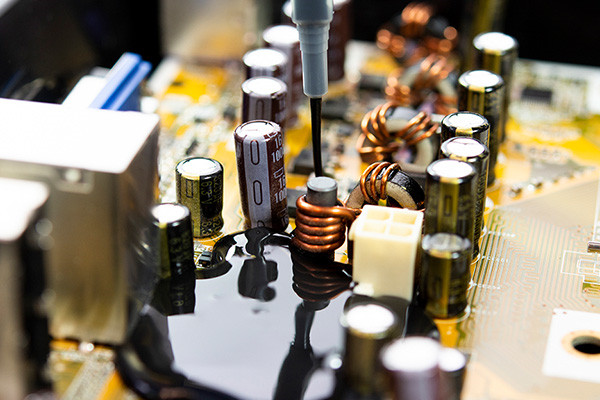
One of the primary functions of urethane conformal coating is moisture protection. Moisture can infiltrate electronic assemblies through various avenues, such as condensation, immersion, or exposure to high-humidity environments. When moisture comes into contact with sensitive electronic components, it can cause corrosion, short circuits, and electrical leakage, leading to malfunctions or complete failure of the device. Urethane conformal coating acts as a moisture barrier, preventing water and other liquids from reaching the delicate circuitry and thereby enhancing the reliability and longevity of the electronics.
Furthermore, urethane conformal coatings provide insulation against electrical conductivity. They help prevent unintended electrical connections between adjacent conductive traces or components on a circuit board, reducing the risk of short circuits and electrical malfunctions.
Additionally, these coatings offer protection against dust and airborne contaminants. Dust particles can accumulate on electronic assemblies over time, potentially causing overheating or interfering with the performance of the components. Urethane conformal coating creates a smooth, sealed surface that repels dust and inhibits the accumulation of contaminants, maintaining the cleanliness and functionality of the electronics.
Chemical resistance is another essential aspect of urethane conformal coatings. Electronic devices may encounter various chemicals during their lifespan through exposure to cleaning solvents, industrial gasses, or environmental pollutants. Urethane coatings provide a barrier against chemical ingress, shielding the underlying components from corrosive substances and preserving their integrity.
Moreover, urethane conformal coatings offer mechanical protection by providing a barrier against physical damage such as abrasion, vibration, and impact. This safeguard helps prevent mechanical stress-induced failures and ensures the robustness of the electronic assemblies, especially in applications subject to harsh operating conditions or rough handling.
Urethane conformal coatings protect electronic assemblies by forming a barrier against moisture, dust, chemicals, electrical conductivity, and mechanical stress. By providing these vital protective functions, urethane coatings contribute to electronic devices’ reliability, durability, and performance in a wide range of applications.
What factors should be considered when selecting a urethane conformal coating?
Selecting the appropriate urethane conformal coating is crucial for ensuring the reliability and longevity of electronic assemblies, particularly in demanding environments. Several factors must be carefully considered:
- Environmental Conditions: Assess the operating environment where the coated electronics will be deployed. Factors such as temperature extremes, humidity, chemical exposure, and UV radiation can significantly impact the performance of the conformal coating. Ensure the selected urethane coating offers resistance to these conditions.
- Application Method: Consider the application method, whether it’s by dipping, spraying, or brushing. Different urethane coatings may be formulated for specific application techniques, so compatibility with the chosen method is essential for achieving uniform coverage and optimal performance.
- Curing Mechanism: Urethane conformal coatings may cure through various mechanisms such as heat, moisture, or chemical reactions. Choose a coating with a curing mechanism suitable for the electronics manufacturing process and operational requirements.
- Chemical Compatibility: Evaluate the compatibility of the urethane coating with the materials used in the electronic assembly, including circuit boards, components, and solder masks. Chemical interactions between the coating and substrate should be minimized to prevent degradation or delamination over time.
- Dielectric Properties: Verify that the selected urethane conformal coating provides adequate electrical insulation to protect against short circuits and other electrical failures. Dielectric strength, impedance, and resistivity are essential considerations, especially in high-voltage applications.
- Mechanical Protection: Assess the level of mechanical protection required for the electronic assembly. The urethane coating should offer sufficient resistance to abrasion, impact, and vibration to safeguard delicate components and solder joints from physical damage.
- Thickness and Coverage: Determine the desired coating thickness and coverage to achieve the desired level of protection without impeding functionality or thermal dissipation. Balancing protection with considerations like weight and cost is essential.
- Regulatory Compliance: Ensure that the chosen urethane conformal coating complies with relevant industry standards and regulations, such as RoHS (Restriction of Hazardous Substances) and REACH (Registration, Evaluation, Authorization, and Restriction of Chemicals), to meet legal and environmental requirements.
By carefully evaluating these factors, manufacturers can select the most suitable urethane conformal coating to enhance electronic assemblies’ reliability, performance, and longevity in diverse applications.
What are the different methods of applying urethane conformal coatings?
Urethane conformal coatings are applied to electronic assemblies to protect against environmental factors such as moisture, dust, chemicals, and temperature fluctuations. These coatings can be applied using various methods, each offering unique advantages depending on the application requirements and the complexity of the assembly.
- Spraying: Spraying is one of the most common methods for applying urethane conformal coatings. It involves using a specialized spray gun to atomize the coating material into fine droplets, which are then evenly applied onto the surface of the electronic assembly. Spraying allows for fast and uniform coverage, making it suitable for high-volume production environments. Additionally, spraying can provide thin, consistent coatings with excellent adhesion.
- Dipping: Dipping involves immersing the electronic assembly into a bath of urethane coating material. The assembly is then slowly withdrawn, allowing excess coating to drip off before the material cures. Dipping is often used for complex assemblies with components of varying heights, as it ensures complete coverage of all surfaces, including difficult-to-reach areas. However, controlling coating thickness can be challenging with this method.
- Brushing: Brushing is a manual application method where a brush is used to apply the urethane coating directly onto the surface of the assembly. This method is typically used for low-volume production or touch-up applications requiring precision. Brushing allows greater control over the coating thickness and application area, making it suitable for small-scale or intricate assemblies.
- Selective Coating: Selective coating involves applying only urethane coating to specific electronic assembly areas, leaving other regions uncoated. This method uses precision dispensing equipment such as robotic arms or automated dispensers. Selective coating is commonly used to protect sensitive components or areas that require extra protection while avoiding coating on connectors or heat sinks where coating may interfere with functionality.
- Curing: After applying the urethane coating, curing is necessary to achieve the desired protective properties. Curing can be accomplished through various methods, including air drying, heat curing, or UV curing, depending on the specific formulation of the urethane coating and the application’s requirements.
The different methods of applying urethane conformal coatings offer flexibility and versatility to meet the diverse needs of electronic assemblies in terms of production volume, complexity, and precision. Each method has its advantages and is chosen based on cost, production requirements, and the desired level of protection.
Can urethane conformal coatings be removed or reworked?
Like many other conformal coatings, urethane conformal coatings can be removed or reworked. However, the process may vary depending on factors such as the specific formulation of the coating, the substrate it’s applied to, and the desired outcome. Here’s a breakdown of the potential methods:
- Chemical Stripping: One standard method for removing urethane conformal coatings involves chemical stripping agents. These agents are designed to dissolve or soften the coating, making removing it easier. The choice of stripping agent will depend on the specific composition of the coating and the substrate. Typical chemicals include solvents like acetone, methylene chloride, or specialized conformal coating removers. The effectiveness of this method can vary depending on the thickness and age of the coating.
- Mechanical Removal: Mechanical methods can also remove urethane conformal coatings. This may involve scraping, sanding, or abrasive blasting. Care must be taken to avoid damaging the underlying substrate during this process, especially if it’s sensitive to mechanical stress. Mechanical removal is often used in conjunction with chemical stripping to ensure thorough removal of the coating.
- Thermal Stripping: Another option for removing urethane conformal coatings is thermal stripping. This involves heating the coated substrate to a temperature at which the coating softens or decomposes, allowing it to be easily removed. However, this method can be challenging due to the potential for thermal damage to the substrate or other components on the board.
- Reworking: In some cases, reworking urethane conformal coatings may be possible rather than entirely removing them. This typically involves selectively removing and reapplying the coating to specific substrate areas. Reworking may be necessary to repair defects or accommodate changes in the design or functionality of the electronic assembly.
While urethane conformal coatings can be removed or reworked, the process requires careful consideration of factors such as the coating composition, substrate material, and desired outcome to ensure successful results without damaging the underlying components.
What are the typical curing methods for urethane conformal coatings?
Urethane conformal coatings are commonly used in electronics manufacturing to protect circuit boards and electronic components from environmental stresses such as moisture, dust, chemicals, and temperature fluctuations. Curing these coatings is crucial to ensure they provide optimal protection and adhere properly to the substrate. Several curing methods are employed in the industry, each offering specific advantages depending on the application requirements:
- Thermal Curing: This is the most common method for curing urethane conformal coatings. It involves subjecting the coated components to elevated temperatures for a specific period. The coated parts are typically placed in an oven with controlled temperature and time parameters. The heat accelerates the cross-linking reactions within the coating, promoting curing and improving coating properties such as hardness, adhesion, and chemical resistance.
- UV Curing: UV (Ultraviolet) curing is a relatively fast and energy-efficient method suitable for applications requiring rapid curing cycles. Urethane conformal coatings formulated with photoinitiators can cure when exposed to UV light of appropriate wavelength. UV curing offers advantages such as reduced processing time, lower energy consumption, and the ability to control curing depth by adjusting UV exposure parameters.
- Moisture Curing: Some urethane conformal coatings are designed to cure in the presence of moisture from the surrounding environment. These coatings contain moisture-reactive functional groups that undergo curing reactions upon exposure to atmospheric moisture. Moisture curing is advantageous for applications where controlled heating or UV exposure, such as field repairs or coating large structures, is impractical.
- Chemical Curing: Chemical curing involves using curing agents or catalysts to initiate and accelerate the curing reactions in urethane conformal coatings. These additives promote cross-linking between polymer chains, leading to the formation of a cured film. Chemical curing offers versatility in curing conditions and can be tailored to specific application requirements.
- Dual Cure Systems: Some advanced urethane conformal coatings utilize dual-cure systems combining two or more curing mechanisms. For example, a coating may undergo initial UV exposure and further curing via thermal or moisture activation. Dual-cure systems offer enhanced flexibility, allowing manufacturers to optimize curing conditions for improved performance and efficiency.
The curing method for urethane conformal coatings depends on the substrate material, coating formulation, production volume, processing constraints, and desired coating properties. Manufacturers often select the most suitable curing method based on these considerations to ensure high-quality, durable coatings that meet performance requirements.
Are there different types of urethane conformal coatings available in the market?
Various types of urethane conformal coatings are available in the market, each tailored to meet specific application requirements and environmental conditions. These coatings differ in formulation, curing mechanisms, properties, and intended use. Some common types include:
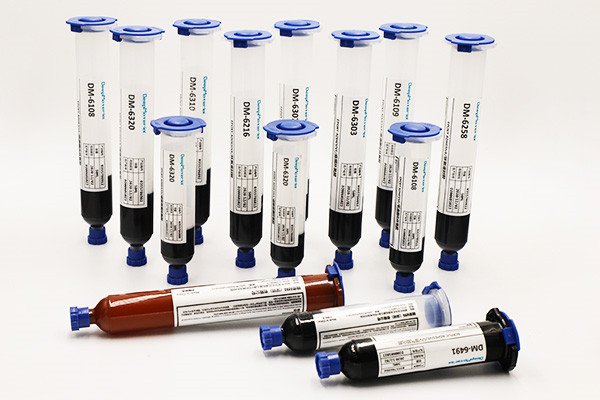
- Single-Component Urethane Conformal Coatings: These coatings come ready to use and typically cure through air drying, moisture, or thermal curing. Single-component formulations offer ease of application and are suitable for a wide range of electronic applications requiring moderate protection.
- Two-Component Urethane Conformal Coatings: These coatings consist of a base component and a curing agent or catalyst. Mixing these components initiates curing reactions, resulting in a cross-linked coating with enhanced properties such as improved chemical resistance, hardness, and adhesion. Two-component systems offer greater control over curing and can be customized to achieve specific performance characteristics.
- UV-Curable Urethane Conformal Coatings: Formulated with photoinitiators, these coatings cure rapidly when exposed to UV light of appropriate wavelength. UV curing offers advantages such as faster processing times, energy efficiency, and the ability to coat heat-sensitive substrates without subjecting them to elevated temperatures.
- Moisture-Curable Urethane Conformal Coatings: These coatings contain moisture-reactive functional groups that facilitate curing in the presence of atmospheric moisture. Moisture-curable coatings are suitable for applications where controlled heating or UV exposure is impractical, offering versatility and convenience in curing conditions.
- Chemically-Curable Urethane Conformal Coatings: These coatings utilize chemical curing agents or catalysts to initiate and accelerate curing reactions. Chemical curing offers flexibility in curing conditions and can be tailored to achieve specific performance requirements.
- Dual-Cure Urethane Conformal Coatings: Dual-cure systems combine two or more curing mechanisms, such as UV and thermal or UV and moisture curing. These coatings offer enhanced versatility and performance, allowing manufacturers to optimize curing conditions for improved coating properties and efficiency.
Additionally, urethane conformal coatings may vary in viscosity, color, flexibility, and chemical resistance to accommodate diverse application needs. Manufacturers often provide a range of options to meet specific requirements related to substrate materials, operating environments, and performance expectations in various industries such as automotive, aerospace, electronics, and marine.
What are the challenges associated with applying urethane conformal coatings?
Applying urethane conformal coatings presents several challenges due to their unique properties and the precision required in their application:
- Surface Preparation: Urethane conformal coatings require a clean and properly prepared surface for optimal adhesion. Contaminants such as oils, dust, or residues can compromise adhesion, leading to coating failure. Ensuring thorough cleaning and surface treatment is essential but can be time-consuming and labor-intensive.
- Viscosity Control: Urethane coatings often have a relatively high viscosity, making them challenging to apply evenly, especially on complex or three-dimensional surfaces. Proper viscosity control through temperature regulation or thinning agents is crucial to achieving uniform coverage without pooling or dripping.
- Curing Time and Conditions: Urethane coatings typically require specific curing conditions, such as controlled temperature and humidity levels, to achieve optimal properties. Failure to adhere to these conditions can result in incomplete curing, leading to poor performance or premature coating failure.
- Thickness Control: Achieving the desired coating thickness is critical for providing adequate protection without overcoating, which can lead to issues such as cracking or delamination. Controlling the application process to ensure consistent thickness across the entire substrate can be challenging, particularly on irregular or small-scale components.
- Environmental Concerns: Urethane coatings may contain volatile organic compounds (VOCs) or other hazardous chemicals, posing health and safety risks to workers and requiring appropriate ventilation and personal protective equipment during application. Additionally, disposal of unused or waste coating materials must comply with environmental regulations.
- Compatibility: Compatibility issues can arise when applying urethane coatings over substrates or components with different material compositions. Adverse reactions between the coating and substrate materials can lead to poor adhesion, blistering, or other defects, necessitating thorough compatibility testing before application.
- Quality Assurance: Ensuring consistent quality and performance of urethane conformal coatings requires rigorous quality control measures throughout the application process. This includes regular inspection of coated components for defects such as bubbles, pinholes, or uneven coverage and testing for properties such as adhesion, hardness, and chemical resistance.
Addressing these challenges requires careful planning, proper personnel training, and adherence to best practices for surface preparation, application techniques, and quality assurance protocols. Despite the complexities involved, urethane conformal coatings can provide valuable protection against environmental factors and mechanical damage, extending the lifespan of electronic components and assemblies.
How do environmental regulations impact the use of urethane conformal coatings?
Environmental regulations significantly influence the use of urethane conformal coatings due to their potential impact on human health and the environment. Urethane conformal coatings are commonly used in electronic applications to protect printed circuit boards (PCBs) from moisture, dust, chemicals, and other environmental stresses. However, the chemicals in these coatings, such as isocyanates, solvents, and additives, can pose risks if not handled and disposed of properly.
- Regulatory Compliance: Environmental regulations set forth by governmental bodies such as the Environmental Protection Agency (EPA) or European Chemicals Agency (ECHA) often dictate permissible levels of volatile organic compounds (VOCs), hazardous air pollutants (HAPs), and other harmful substances emitted during the manufacturing, application, and disposal of urethane conformal coatings. Compliance with these regulations may require formulation adjustments to reduce or eliminate certain chemicals, leading to the development of low-VOC or solvent-free alternatives.
- Material Selection and Formulation: To meet regulatory requirements, manufacturers may opt for alternative raw materials and formulations that are less harmful to the environment and human health. This could involve substituting hazardous solvents with safer alternatives or using bio-based ingredients. Additionally, efforts may be made to improve the biodegradability and recyclability of urethane conformal coatings to minimize their environmental impact.
- Application and Handling Practices: Environmental regulations also influence urethane conformal coatings’ application and handling practices. To mitigate exposure risks, workers may undergo specialized training on proper ventilation, personal protective equipment (PPE), and waste management procedures. Furthermore, stringent regulations may mandate specific application equipment, such as high-efficiency spray guns or robotic dispensing systems, to minimize overspray and emissions.
- Waste Management and Disposal: Proper disposal of waste materials generated during the manufacturing and application processes is essential for environmental compliance. Regulations may govern the disposal of unused coating materials, spent solvents, and contaminated equipment, requiring adherence to hazardous waste management protocols, recycling initiatives, or treatment methods to prevent soil and water contamination.
Environmental regulations drive innovation and responsible practices in developing, applying, and disposing of urethane conformal coatings, ensuring that they meet stringent safety and environmental standards while maintaining their effectiveness in protecting electronic components. Compliance with these regulations is crucial for safeguarding human health and the environment.
What are the considerations for ensuring proper adhesion of urethane conformal coatings?
Ensuring proper adhesion of urethane conformal coatings is critical for effectively protecting electronic components. Several considerations are essential in achieving this:
- Surface Preparation: Proper surface preparation is fundamental for adhesion. The substrate should be thoroughly cleaned to remove contaminants such as dust, oils, greases, and residues from previous processes. Methods such as solvent cleaning, abrasion, or plasma treatment promote adhesion by enhancing surface wettability and removing any barriers to bonding.
- Surface Activation: Activation techniques like plasma treatment or chemical priming can improve adhesion by altering the surface chemistry to create reactive sites for bonding. Plasma treatment increases surface energy, promoting wetting and adhesion, while chemical primers provide functional groups for chemical bonding between the coating and substrate.
- Compatibility Testing: Compatibility between the conformal coating and the substrate materials must be verified to prevent delamination or poor adhesion over time. Compatibility testing involves evaluating the interaction between the coating and substrates under different conditions, considering temperature, humidity, and chemical exposure.
- Proper Application Technique: Adhesion can be affected by the application technique used. Following manufacturer recommendations regarding application parameters such as viscosity, temperature, and curing conditions is crucial. Proper substrate wetting ensures intimate contact between the coating and the surface, facilitating adhesion.
- Curing Process: Proper curing is essential for achieving optimal adhesion and coating performance. Curing parameters such as temperature, humidity, and time must be controlled to ensure complete cross-linking and bonding of the coating to the substrate. Inadequate curing can lead to poor adhesion and reduced coating integrity.
- Quality Control: Regular quality control checks during the application and curing processes are essential to detect any issues that may compromise adhesion. These checks may include visual inspection, adhesion testing, and monitoring of process parameters to ensure consistency and adherence to specifications.
By addressing these considerations, manufacturers can enhance the adhesion of urethane conformal coatings, ensuring reliable protection for electronic components in various applications.
Are there any special precautions to take during the application process of urethane conformal coatings?
Urethane conformal coatings are widely used in electronic applications to protect printed circuit boards (PCBs) and other sensitive electronic components from environmental factors such as moisture, dust, chemicals, and temperature extremes. Applying urethane conformal coatings requires attention to detail and adherence to specific precautions to ensure optimal performance and longevity of the coated components. Here are some essential precautions to take during the application process:
- Preparation of Work Area:Ensure that the work area is clean, well-ventilated, and free from dust, dirt, and other contaminants. Contaminants can affect the adhesion and performance of the coating.
- Personal Protective Equipment (PPE):Wear appropriate PPE such as gloves, goggles, and a respirator to protect against skin contact, eye irritation, and inhalation of fumes during the coating process.
- Surface Preparation:Thoroughly clean and dry the surfaces to be coated to remove any residues, oils, or contaminants that could interfere with adhesion. Use compatible cleaning agents and methods recommended by the coating manufacturer.
- Temperature and Humidity Control:Maintain recommended temperature and humidity levels in the application area as specified by the manufacturer. Extreme temperatures or high humidity can affect the curing and performance of the urethane coating.
- Proper Mixing:Follow the manufacturer’s instructions for mixing the urethane conformal coating components. Improper mixing can result in uneven coating thickness, poor adhesion, or incomplete curing.
- Application Technique:Apply the urethane conformal coating evenly and uniformly using appropriate methods such as spraying, brushing, or dipping. Avoid excessive buildup or puddling of the coating, which can lead to uneven coverage and potential electrical issues.
- Curing Time and Conditions:The coated components can cure entirely according to the manufacturer’s recommendations. Ensure adequate curing time and conditions, such as temperature and humidity, for optimal performance.
- Post-Application Inspection:After the coating has cured, inspect the coated surfaces for any defects, irregularities, or areas of incomplete coverage. Touch up or reapply the coating as necessary to ensure complete protection.
By following these precautions and guidelines, you can ensure urethane conformal coatings’ successful application and performance, effectively safeguarding electronic components against environmental damage.
How do temperature and humidity affect the curing process of urethane conformal coatings?
Temperature and humidity play crucial roles in the curing process of urethane conformal coatings, affecting both the speed and quality of the final coating. Urethane conformal coatings are commonly used in electronics to protect circuits from environmental factors such as moisture, dust, and chemicals.

Temperature influences the curing rate of urethane coatings. Generally, higher temperatures accelerate the curing process, while lower temperatures slow it down. At elevated temperatures, the molecules in the coating material have higher kinetic energy, leading to faster cross-linking reactions and polymerization. Conversely, lower temperatures decrease molecular mobility, slowing down the curing reaction. However, excessively high temperatures can also cause issues such as uneven curing, bubbling, or even degradation of the coating material.
Humidity also impacts the curing process of urethane coatings. Humidity refers to the amount of water vapor present in the air. Water vapor can participate in the curing reactions of urethane coatings, particularly in moisture-cure formulations. In some cases, a specific humidity level is necessary for proper curing, as it helps facilitate the cross-linking reactions. However, excessive humidity can lead to problems such as blushing, where a hazy or milky appearance forms on the surface of the coating due to moisture being trapped within the film during curing. High humidity levels can also prolong the curing time and affect the final coating properties.
Optimal curing conditions typically involve a balance of temperature and humidity. Manufacturers often provide recommended curing parameters for their specific coating products, including ideal temperature ranges and relative humidity levels. Controlling these parameters during curing is essential for achieving consistent and high-quality coatings. This may involve using controlled environments such as curing ovens or chambers and monitoring and adjusting conditions as needed.
Temperature and humidity significantly influence the curing process of urethane conformal coatings. Understanding their effects and maintaining appropriate conditions are essential for achieving optimal coating performance and reliability in electronic applications.
Can urethane conformal coatings be customized for specific requirements?
Yes, urethane conformal coatings can be customized to meet specific requirements, offering a versatile solution for various applications. Here’s how:
- Material Composition: Urethane conformal coatings can be formulated with different urethane resins to achieve specific properties such as flexibility, chemical resistance, thermal stability, and adhesion strength. By adjusting the ratio of components and incorporating additives, manufacturers can tailor the coating’s properties to suit the intended application.
- Thickness and Coverage: The thickness of the coating can be adjusted to meet the application’s requirements, whether for protecting delicate electronics from moisture and contaminants or providing insulation for electronic components. Customization can involve optimizing the coating thickness to balance protection and cost-effectiveness.
- Curing Mechanism: Urethane conformal coatings can be cured through various mechanisms, such as UV, heat, or moisture. The choice of curing mechanism can be customized based on factors such as production speed, environmental conditions, and substrate compatibility.
- Specialized Additives: Additives can be incorporated into urethane conformal coatings to enhance specific properties. For example, UV stabilizers can be added to improve resistance to UV degradation, while flame retardants can enhance fire resistance. Conductive fillers can also be included to impart electrical conductivity for applications requiring EMI shielding or static dissipation.
- Color and Appearance: Urethane conformal coatings can be customized in terms of color and appearance to meet aesthetic requirements or for functional purposes, such as color-coding different components or improving visibility during inspection processes.
- Application Method: Manufacturers can customize the application method of urethane conformal coatings based on the substrate geometry, production volume, and desired coating thickness. Options include spray coating, dip coating, brush coating, or selective coating techniques like robotic dispensing.
- Compliance and Certification: Customized formulations can be developed to meet specific industry standards and regulatory requirements, such as UL recognition, IPC specifications, or RoHS compliance.
The versatility of urethane conformal coatings allows for a wide range of customization options to address the unique needs of different applications while providing reliable protection and performance.
What are the alternatives to urethane conformal coatings, and how do they compare?
Alternatives to urethane conformal coatings include silicone, acrylic, epoxy, and parylene coatings. Each alternative offers unique properties and advantages depending on the specific application requirements.
- Silicone Coatings: Silicone conformal coatings provide excellent flexibility and high-temperature resistance, making them suitable for harsh environments. They offer good protection against moisture, chemicals, and extreme temperatures. However, due to their strong adhesion properties, silicone coatings can be challenging to repair or rework.
- Acrylic Coatings: Acrylic conformal coatings offer good moisture resistance, clarity, and flexibility. They are relatively easy to apply and provide adequate protection against environmental factors such as humidity and dust. Acrylic coatings are also available in UV-curable formulations, allowing for rapid curing. However, they may provide less durability or chemical resistance than other options.
- Epoxy Coatings: Epoxy conformal coatings are known for their excellent chemical and abrasion resistance, making them suitable for demanding applications. They provide strong adhesion to various substrates and protect against moisture and solvents. Epoxy coatings can withstand high temperatures and harsh environments but may become brittle, especially at elevated temperatures.
- Parylene Coatings: Parylene conformal coatings offer exceptional barrier properties, protecting against moisture, chemicals, and corrosion. They provide uniform coverage even in complex geometries and offer excellent dielectric properties. Parylene coatings are biocompatible and FDA-approved, making them suitable for medical devices and implants. However, they require specialized equipment for deposition and can be expensive compared to other coatings.
Factors such as environmental conditions, substrate materials, application methods, and cost should be considered when comparing these alternatives to urethane conformal coatings. Urethane coatings are valued for their balance of flexibility, chemical resistance, and ease of application. However, depending on the application’s specific requirements, one of the alternatives mentioned above may offer better performance or cost-effectiveness. Therefore, it’s essential to carefully evaluate each option based on the project’s specific needs.
What are the industry standards and certifications related to urethane conformal coatings?
Urethane conformal coatings protect electronic components from environmental factors such as moisture, chemicals, dust, and temperature extremes. To ensure quality and reliability, several industry standards and certifications are relevant:
- IPC Standards: The Institute for Printed Circuits (IPC) sets standards for electronic assemblies, including conformal coating applications. IPC-A-610 outlines acceptance criteria for electronic assemblies, including conformal coating thickness, coverage, and application quality requirements.
- UL Certification: Underwriters Laboratories (UL) offers certification programs for conformal coatings to verify safety and performance standards compliance. UL 746E covers polymeric materials used in electrical equipment and includes requirements for conformal coatings regarding flammability, electrical insulation, and environmental resistance.
- MIL Standards: The United States Department of Defense (DoD) has established MIL standards for various aspects of military equipment, including conformal coatings. MIL-I-46058C specifies requirements for silicone, acrylic, and urethane conformal coatings, covering properties such as adhesion, flexibility, and resistance to moisture and chemicals.
- ISO Standards: The International Organization for Standardization (ISO) has several standards relevant to conformal coatings, such as ISO 9001 (quality management systems) and ISO 14001 (environmental management systems). Compliance with ISO standards demonstrates a commitment to quality management and environmental responsibility in producing conformal coatings.
- RoHS and REACH Compliance: Regulations such as the Restriction of Hazardous Substances (RoHS) directive and the Registration, Evaluation, Authorization, and Restriction of Chemicals (REACH) regulation restrict the use of certain hazardous substances in electrical and electronic equipment, including conformal coatings. Compliance with RoHS and REACH demonstrates that coatings do not contain banned substances and meet environmental safety requirements.
- Customer Specifications: Many industries, particularly aerospace, automotive, and medical devices, may have their specifications for conformal coatings based on unique performance requirements and environmental conditions. Compliance with customer-specific specifications is essential for supplying conformal coatings to these industries.
Compliance with these standards and certifications ensures that urethane conformal coatings meet quality, safety, and regulatory requirements, contributing to the reliability and longevity of electronic assemblies in various applications.
What advancements are being made in the field of urethane conformal coatings?
Urethane conformal coatings protect electronic components from environmental factors such as moisture, dust, chemicals, and temperature variations. Advancements in this field are focused on improving coating performance, durability, and application efficiency.
One significant advancement lies in formulating urethane coatings to enhance their resistance to harsh environments. Researchers are exploring novel additives and chemical compositions to achieve superior protection against moisture ingress, corrosion, and thermal stress. These advancements aim to extend the lifespan of coated electronic assemblies, especially in demanding applications such as automotive, aerospace, and industrial electronics.
Moreover, efforts are underway to develop urethane coatings with enhanced flexibility and adhesion properties. Flexible coatings are crucial for conformal applications, ensuring that the coating can conform to electronic circuitry’s complex shapes and contours without cracking or delamination. Improved adhesion strength helps prevent the coating from peeling off over time, ensuring long-term protection of electronic components.
Advances are being made in application techniques to optimize coating processes for efficiency and precision. Automated dispensing systems and robotic applicators are increasingly adopted to achieve consistent coating thickness and coverage across complex assemblies. This not only enhances the reliability of coated electronics but also reduces production time and labor costs.
Additionally, advancements in curing technologies are enhancing the speed and effectiveness of urethane coating curing processes. UV-curable urethane coatings, for instance, offer rapid curing times and can be selectively cured using UV light, allowing for faster throughput and energy savings compared to traditional thermal curing methods.
Furthermore, researchers are exploring environmentally friendly alternatives in urethane coating formulations, aiming to reduce the environmental impact of coating application and disposal. This includes the development of water-based urethane coatings and formulations with reduced volatile organic compound (VOC) content, aligning with sustainability goals and regulations.
The need for improved protection, application efficiency, and environmental sustainability in electronics manufacturing drives advancements in urethane conformal coatings. These developments contribute to the advancement of various industries reliant on electronic assemblies while ensuring the longevity and reliability of electronic devices in harsh operating environments.
Conclusion:
Urethane conformal coatings safeguard electronic components from harsh environmental conditions, ensuring reliability and longevity. With their exceptional properties and diverse applications, urethane conformal coatings are preferred for industries seeking robust protection for their electronic assemblies. Understanding the nuances of urethane conformal coatings is essential for selecting the right coating system to meet specific performance requirements and regulatory standards. As technology advances, ongoing research and development in this field promise further enhancements and innovations in urethane conformal coating technology.

About DeepMaterial
DeepMaterial is a trusted supplier of encapsulant materials that are used in electronics manufacturing worldwide. From chip on board encapsulants such as glob top material to conformal coatings, underfills, low pressure molding, and potting solutions, DeepMaterial offers a full range of circuit board protection materials that effectively protect circuit boards while help reduce costs. More…Deepmaterial is a the manufacturer of epoxy adhesives including hardeners, metalbond, and metal filled resins. Structural, toughened medium viscosity, and non-sag adhesives are also offered. Some adhesives are resistant to thermal shock, chemical, vibration dampening, and impact. Suitable for metals, plastics, wood, and ceramics. Serves electronics, aerospace, automotive, tooling, marine, and construction industries. REACH and RoHS compliant. FDA approved. UL listed. Meets military specifications. We are the one of best adhesive manufacturers in China.
Blogs & News
Potting compounds are at the frontline of electronics assembly, delivering effective protection in challenging environmental conditions while improving mechanical strength and offering high electric insulation. Used within a variety of industries, electrical potting compounds are found within a broad range of consumer electronics, as well as used in applications across the automotive, aerospace, and other industries where electronic assemblies are prevalent.
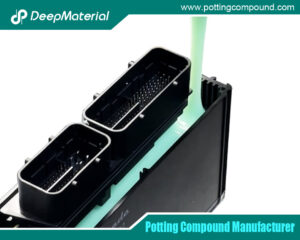
What Are the Core Differences Between Different Conformal Coating Types?
What Are the Core Differences Between Different Conformal Coating Types? Conformal coatings are thin polymeric films applied to electronic circuits to protect them from environmental
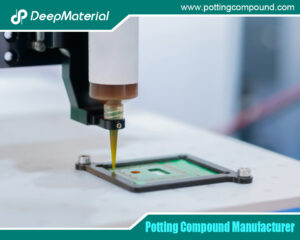
The Benefits of Conformal Coating for Electronics Products
The Bbenefits of Conformal Coating for Electronics Products In the world of electronics, where devices are increasingly compact and exposed to harsh environments, protecting sensitive
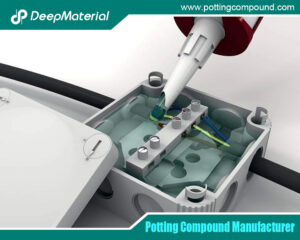
Conformal Coating Spray
Conformal Coating Spray In the fast-paced world of electronics, protecting printed circuit boards (PCBs) from environmental hazards is essential to ensure reliability and longevity. Conformal
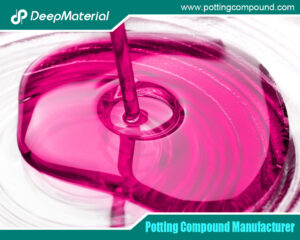
UV Curing Potting Compound
UV Curing Potting Compound In the rapidly evolving landscape of electronics and advanced manufacturing, protecting sensitive components with speed and precision is critical. UV curing
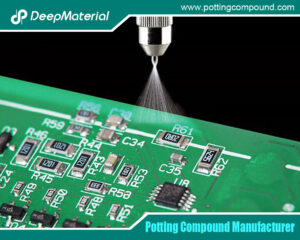
The Ultimate Guide to Electrical Potting Compound and Market Application
The Ultimate Guide to Electrical Potting Compound and Market Application In the modern world of electronics, where devices are increasingly compact and exposed to harsh

The Top Polyurethane Potting Compound
The Top Polyurethane Potting Compound In the fast-evolving world of electronics and industrial manufacturing, protecting sensitive components from environmental hazards is critical to ensuring reliability



